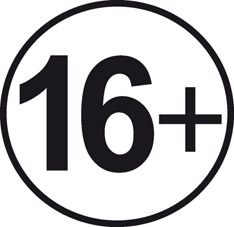Контакты Contacts
Почтовый адрес: Россия, 173003, г. Великий Новгород, ул. Б. С.-Петербургская, 41, ауд. 1308, Центр развития публикационной активности.
Тел.: 8 (8162) 33 88 30 доб. 2294;
Факс: (8162) 97 45 26.
E-mail: eNotes@novsu.ru
Postal address: Russia, 173003, Velikiy Novgorod, Yaroslav the Wise Novgorod State University, B.Sankt-Peterburgskaya St, 41 Bldg., 1308. Editorial Office.
Tel. (8162) 33-88-30 ext. 2294
Fax (8162) 97 45 26
|
|
|
Титова Н.С. (Titova N.S.)
Змееборческий мотив в творчестве В.А.Шуфа как отражение борьбы Георгия Победоносца с силами зла
Анализируется архетипический мотив змееборчества как один из доминирующих мотивов многогранного наследия Владимира Александровича Шуфа — незаслуженно «забытого» поэта рубежа XIX—XX вв. Отмечается, что в целостном, иконичном наследии Шуфа, указывающем путь к обретению истинных духовных православных ценностей в противоположность богоборческим, «богоискательским» устремлениям модернистов, важную роль играет мотив борьбы с силами зла (Дьяволом, Сатаной, бесом, мусульманским Эблисом), воплощёнными также в художественных образах Змия или Змея, Дракона, которых призван победить, по традиции, Георгий Победоносец, явно предстающий лишь в двух произведениях поэта, но имплицитно сопровождающий автора и лирического героя во всём творчестве. Шуф продолжил духовные традиции русской литературы — в первую очередь, Тургенева и Достоевского, трактуя образы революции и революционера как порождение бесовских сил. Шуф в своем наследии показал, что утрата традиционных духовных ценностей может привести Россию к апокалиптическим потрясениям и каждый человек по пути «в мир иной» должен одержать победу над Змеем во всех его ипостасях, как Святой Георгий.
Ключевые слова: змееборческий мотив, Георгий Победоносец, Владимир Александрович Шуф, Серебряный век русской литературы, историко-литературный процесс рубежа XIX—XX вв., духовные традиции
The dragon fighter motive in V.A.Shuf’s works as the reflection of St. George fight against the satanic host
The present paper is concerned with the work of Vladimir Shuf, a Russian all but forgotten poet of the Silver Age whose collection of sonnets “To another land…” had an Honored Pushkin testimonial. The study is novel in that the author has analysed for the first time ever the emblematic dragon fighter motive that was one the main motives in Shuf’s rich heritage. In the body of the study there has taken place a brief review of the restoration of the poet and his works in the historical and literary process on the cusp of the XIX—XX centuries. It has been noticed that in his works Shuf indicated the way of inheriting truly spiritual orthodox values by contrast to the modernists’ enmity toward God. The study results have proved the important role of the motive of fighting against the satanic host, against the Devil incarnated in the word-picture of the Serpent or Dragon (or Eblis in the Islamic religion). Traditionally, this is St. George the Dragon Slayer who is destined to fight off the Enemy. The empirical material has shown St. George the Dragon Slayer was an evident character just in two Shuf’s works, but his image can be implicitly seen in other writings of the poet. Shuf being a custodian of Russian literary spiritual traditions, especially of Turgenev and Dostoevsky, interpreted the images of the revolutionaries as obsessed by demons. So, the considerable research on the dragon fighter motive in Vladimir Shuf’s works has led to the conclusion that the poet confirmed the inevitability of apocalyptic upheavals for Russia in the case of its loss of spiritual values and the mission of each person to fight off the Serpent while going by one’s road to heaven.
Keywords: dragon fighter motive, St. George the Dragon Slayer, Vladimir Aleksandrovich Shuf, the Silver Age of the Russian literature, historical and literary process on the cusp of the XIX—XX centuries
https://doi.org/10.34680/2411-7951.2020.3(28).13
← →
Документы

Свидетельство о регистрации (548 КБ) |

Заключение экспертного совета (80 КБ) |

|
Информация
 |
 |
Это произведение доступно по лицензии Creative Commons «Attribution-NonCommercial» («Атрибуция — Некоммерческое использование») 4.0 Всемирная.
Регулярные выпуски журнала выходят ежеквартально, не менее 4 раз в год. Возможен выход специальных выпусков журнала.

